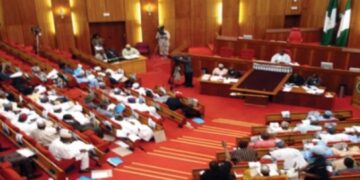
By Ibrahim Kegbegbe
The Otedola Bridge in Lagos has once again made headlines for the wrong reasons. On the night of March 11, 2025, a 30-tonne DAF gas truck lost control, overturned, and exploded, claiming two lives, destroying 15 vehicles, and setting four buildings, including a church, ablaze.
This incident is not an isolated one. The bridge has been the site of multiple accidents over the years, including the June 28, 2018, tanker explosion that killed at least nine people and destroyed 54 vehicles. In 2020 and early 2025, similar crashes occurred. The question remains: why has this dangerous trend continued?
The Root Causes of Frequent Accidents
While these incidents are often blamed on reckless driving and brake failure, a deeper analysis reveals several systemic failures:
1. Poor Road Design and Maintenance
The design of Otedola Bridge and its surrounding roads may be a major contributing factor. The inclination of the bridge, combined with possible poor surfacing, could make it difficult for heavy-duty vehicles to maintain control. Reports from eyewitnesses and transport operators suggest that the road is often too slippery, increasing the chances of vehicles skidding, especially during emergency braking.
2. Lack of Strict Regulatory Enforcement
The Nigerian government has regulations on tanker movement, speed limits, and operational hours, but enforcement remains weak. Were safety checks conducted on this 30-tonne gas truck before it entered the expressway? Was it overloaded? The authorities must take responsibility for ensuring that only roadworthy tankers operate on highways.
3. Untrained and Reckless Driving
Many truck drivers in Nigeria lack proper training in handling heavy-duty vehicles, particularly those carrying hazardous materials. Speeding, fatigue, and reckless maneuvers have contributed to several crashes on Otedola Bridge. A certification system should be in place to ensure only qualified drivers handle fuel tankers and heavy trucks.
What Can Be Done? A Call for Urgent Action
If Lagos must prevent further disasters at Otedola Bridge, urgent steps must be taken:
1. Immediate Road Inspection and Repairs
The Lagos State Public Works Corporation should conduct a detailed structural assessment of Otedola Bridge and its surroundings. If necessary, road resurfacing and improvements should be made to enhance vehicle grip and reduce skidding.
2. Strict Monitoring and Control of Tanker Movements
The government must fully enforce regulations limiting tanker movement during peak hours and ensure mandatory pre-trip safety checks. Traffic officers and regulatory agencies should ensure compliance.
3. Mandatory Training and Licensing for Tanker Drivers
The Ministry of Transportation should establish stricter licensing requirements for tanker and truck drivers, ensuring only those with professional training operate on highways.
4. Strengthening Emergency Response Systems
Lagos State Emergency Management Agency (LASEMA) must improve its response time and be equipped with modern firefighting and rescue tools. Every second counts when dealing with fuel explosions.
Enough Is Enough! Will the Government Finally Act?
Year after year, innocent Nigerians continue to lose their lives due to preventable accidents on Otedola Bridge. It is no longer enough for government officials to visit the accident site, offer condolences, and promise investigations. If action is not taken now, we will soon be reporting another tragedy.
The question remains: will the government finally address this issue, or are we doomed to witness yet another preventable inferno?
















